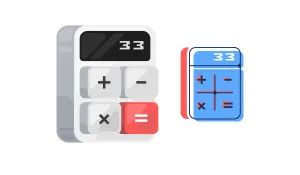When you turn on the financial news, you'll hear a string of numbers that sound like a secret code: "The S&P 500 was up 20 points, the Dow was down 150, and the Nasdaq hit a new high."
These are all market indexes. An "index" is just a measuring stick for the stock market. Think of it like a "Top 100" music chart—it's just a list that tracks what's popular or, in this case, what's valuable.
While all three measure "the market," they track different baskets of stocks in different ways. Here’s the simple breakdown.
1. The S&P 500: The "Real" Market
This is the one that matters most. As we covered in our S&P 500 guide, this index tracks the 500 largest and most important U.S. companies.
- What's Inside: A broad mix of everything—tech, healthcare, finance, consumer goods. It includes companies like Apple, Microsoft, Amazon, and Johnson & Johnson.
- How It's Measured: It's market-cap weighted. This means giant companies like Apple have a much bigger impact on the index's movement than smaller companies.
- What It Tells You: This is the best "snapshot" of the entire U.S. economy. When people say "the market," they are usually referring to the S&P 500.
Bottom Line: The S&P 500 is the most accurate measure and the one most professional investors use as their benchmark.
2. The Nasdaq: The "Tech" Index
The Nasdaq is the new-school, high-growth index.
- What's Inside: It tracks over 3,000 stocks, but it is famous for being "tech-heavy." This is the home of all the biggest names in technology. If a company is in tech, it's almost certainly on the Nasdaq. Think Apple, Microsoft, Google, Amazon, Nvidia, Tesla, and Meta (Facebook).
- How It's Measured: It is also market-cap weighted, just like the S&P 500. This means the movements of those giant tech companies dominate what the Nasdaq does each day.
- What It Tells You: The Nasdaq is the best way to see the health and performance of the technology sector. If tech stocks are having a great day, the Nasdaq will be up big.
Bottom Line: Watch the Nasdaq to see what technology and high-growth stocks are doing.
3. The Dow Jones (DJIA): The "Famous Old" Index
The Dow Jones Industrial Average (or "the Dow") is the one your grandparents know. It’s the oldest and most famous, but it's also the weirdest.
- What's Inside: It tracks only 30 massive "blue-chip" U.S. companies. These are supposed to be stable, industry-leading companies like Home Depot, McDonald's, Coca-Cola, and Boeing. (Note: Amazon and Google are not in the Dow).
- How It's Measured: This is the key difference. The Dow is price-weighted. This is an old, strange system that has nothing to do with how big a company is. It only looks at the dollar price of a single share.
- Example: A company with a $300 stock price has more impact on the Dow than a company with a $100 stock price, even if the $100-stock company is ten times bigger in total value.
Bottom Line: The Dow is famous, but most investors don't take it as seriously as the S&P 500 because its price-weighted method is so strange and only includes 30 stocks.
Head-to-Head: The Simple Comparison
| Index | S&P 500 | Nasdaq Composite | Dow Jones (DJIA) |
| What It Is | The "Total Market" | The "Tech Market" | The "Famous 30" |
| How Many Stocks? | 500 | 3,000+ | 30 |
| How It's Weighted | Market-Cap (Big companies move it more) | Market-Cap (Big tech moves it more) | Price (High-price stocks move it more) |
Which One Should a Beginner Watch?
For a new investor, the S&P 500 is the only one you really need to follow.
It gives you the most honest, balanced, and complete picture of how the U.S. stock market is actually doing. The other two are just for context: the Dow is for history, and the Nasdaq is for seeing what the tech sector is up to.






